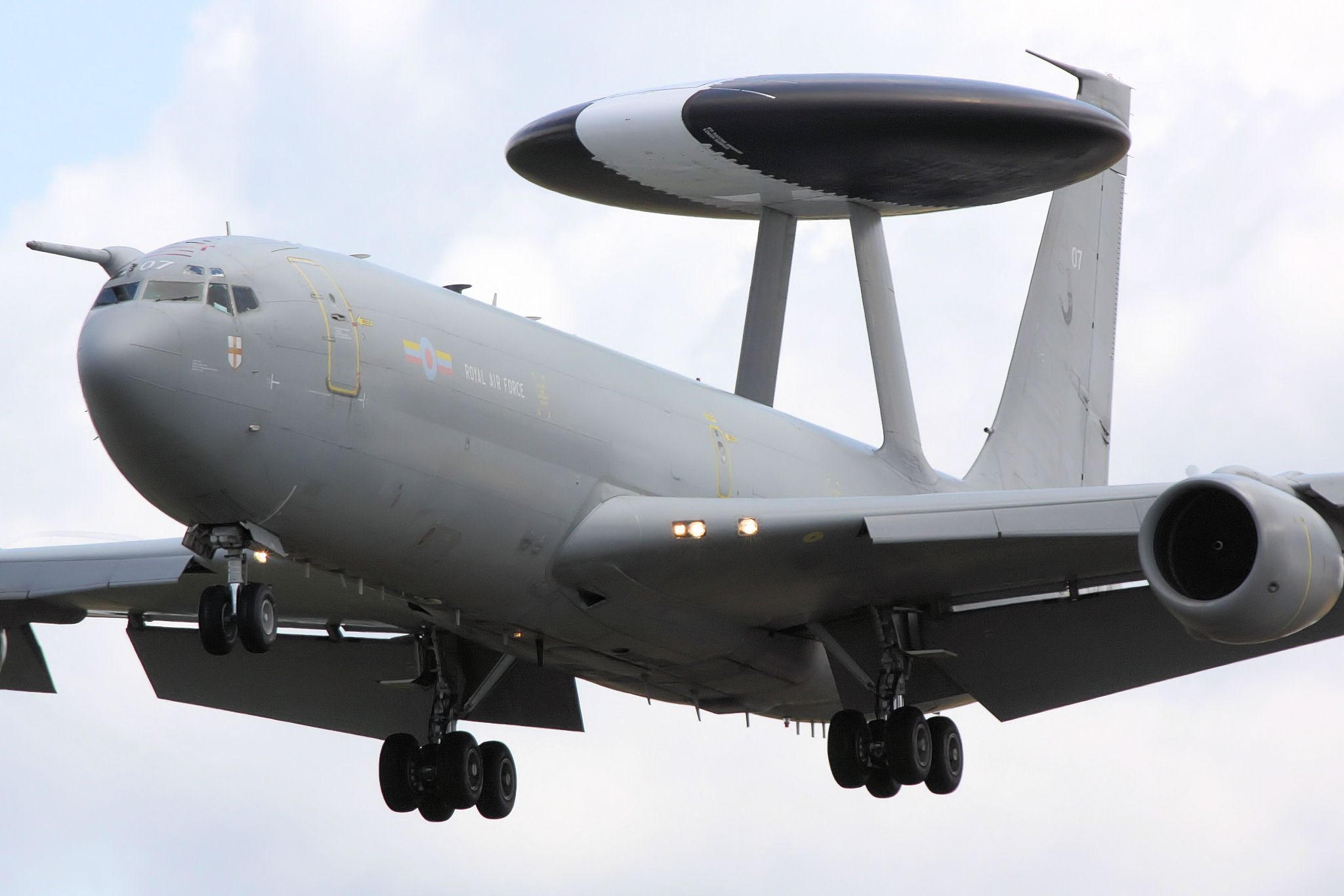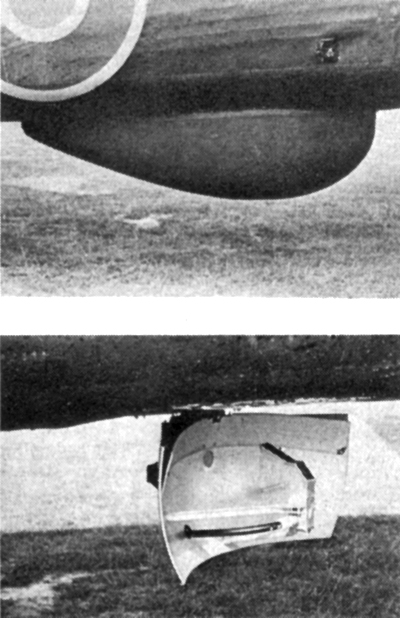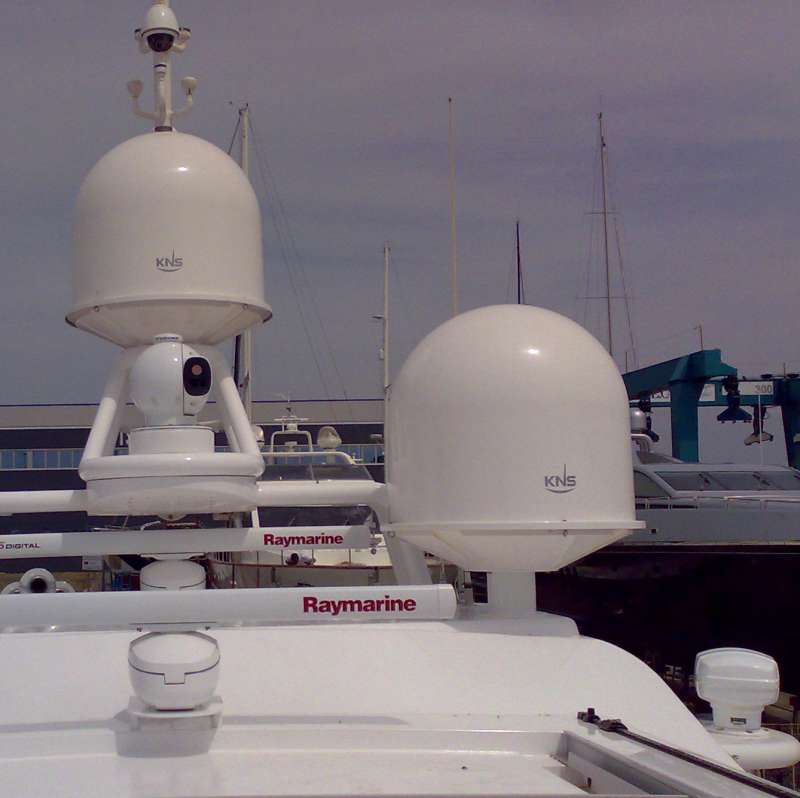Radome on:
[Wikipedia]
[Google]
[Amazon]

 A radome (a
A radome (a
 A radome is often used to prevent ice and
A radome is often used to prevent ice and
radomes.org/museum
for Baker AFS/821st Radar Squadron.
 For
For
Photograph of Mount Hebo while active
overlooking Pacific Ocean {{commons category, Radomes Radar Domes Antennas (radio) British inventions

 A radome (a
A radome (a portmanteau
A portmanteau word, or portmanteau (, ) is a blend of wordsradar
Radar is a detection system that uses radio waves to determine the distance (''ranging''), angle, and radial velocity of objects relative to the site. It can be used to detect aircraft, Marine radar, ships, spacecraft, guided missiles, motor v ...
and dome
A dome () is an architectural element similar to the hollow upper half of a sphere. There is significant overlap with the term cupola, which may also refer to a dome or a structure on top of a dome. The precise definition of a dome has been a m ...
) is a structural, weatherproof enclosure that protects a radar
Radar is a detection system that uses radio waves to determine the distance (''ranging''), angle, and radial velocity of objects relative to the site. It can be used to detect aircraft, Marine radar, ships, spacecraft, guided missiles, motor v ...
antenna
Antenna ( antennas or antennae) may refer to:
Science and engineering
* Antenna (radio), also known as an aerial, a transducer designed to transmit or receive electromagnetic (e.g., TV or radio) waves
* Antennae Galaxies, the name of two collid ...
. The radome is constructed of material transparent to radio waves. Radomes protect the antenna from weather and conceal antenna electronic equipment from view. They also protect nearby personnel from being accidentally struck by quickly rotating antennas.
Radomes can be constructed in several shapes spherical, geodesic
In geometry, a geodesic () is a curve representing in some sense the shortest path ( arc) between two points in a surface, or more generally in a Riemannian manifold. The term also has meaning in any differentiable manifold with a connecti ...
, planar, etc. depending on the particular application, using various construction materials such as fiberglass
Fiberglass ( American English) or fibreglass (Commonwealth English) is a common type of fiber-reinforced plastic using glass fiber. The fibers may be randomly arranged, flattened into a sheet called a chopped strand mat, or woven into glass cl ...
, polytetrafluoroethylene (PTFE)-coated fabric, and others.
When found on fixed-wing aircraft
An aircraft is a vehicle that is able to flight, fly by gaining support from the Atmosphere of Earth, air. It counters the force of gravity by using either Buoyancy, static lift or by using the Lift (force), dynamic lift of an airfoil, or in ...
with forward-looking radar, as are commonly used for object or weather detection, the nose cones often additionally serve as radomes. On aircraft used for airborne early warning and control
Airborne or Airborn may refer to:
Arts, entertainment, and media
Films
* ''Airborne'' (1962 film), a 1962 American film directed by James Landis
* ''Airborne'' (1993 film), a comedy–drama film
* ''Airborne'' (1998 film), an action film sta ...
(AEW&C), a rotating radome, often called a "rotodome", is mounted on the top of the fuselage for 360-degree coverage. Some newer AEW&C configurations instead use three antenna modules inside a radome, usually mounted on top of the fuselage, for 360-degree coverage, such as the Chinese KJ-2000 and Indian DRDO AEW&Cs.
On rotary-wing and fixed-wing aircraft using microwave satellite for beyond-line-of-sight communication, radomes often appear as blisters on the fuselage. In addition to protection, radomes also streamline the antenna system, thus reducing drag.
The air supported radome built by Walter Bird in 1948 at the Cornell Aeronautical Laboratory is the first pneumatic construction built in history.
Use
 A radome is often used to prevent ice and
A radome is often used to prevent ice and freezing rain
Freezing rain is rain maintained at temperatures below freezing by the ambient air mass that causes freezing on contact with surfaces. Unlike a mixture of rain and snow or ice pellets, freezing rain is made entirely of liquid droplets. The rain ...
from accumulating on antennas. In the case of a spinning radar parabolic antenna
A parabolic antenna is an antenna that uses a parabolic reflector, a curved surface with the cross-sectional shape of a parabola, to direct the radio waves. The most common form is shaped like a dish and is popularly called a dish antenna or par ...
, the radome also protects the antenna from debris and rotational irregularities due to wind. Its shape is easily identified by its hardshell, which has strong properties against being damaged.
Stationary antennas
For stationary antennas, excessive amounts of ice can de- tune the antenna to the point where its impedance at the inputfrequency
Frequency is the number of occurrences of a repeating event per unit of time. It is also occasionally referred to as ''temporal frequency'' for clarity, and is distinct from ''angular frequency''. Frequency is measured in hertz (Hz) which is eq ...
rises drastically, causing the voltage standing wave ratio
In radio engineering and telecommunications, standing wave ratio (SWR) is a measure of impedance matching of loads to the characteristic impedance of a transmission line or waveguide. Impedance mismatches result in standing waves along the tran ...
(VSWR) to rise as well. This reflected power goes back to the transmitter
In electronics and telecommunications, a radio transmitter or just transmitter is an electronic device which produces radio waves with an antenna. The transmitter itself generates a radio frequency alternating current, which is applied to the ...
, where it can cause overheating. A foldback circuit can act to prevent this; however, one drawback of its use is that it causes the station's output power to drop dramatically, reducing its range. A radome avoids that by covering the antenna's exposed parts with a sturdy, weatherproof material, typically fiberglass, keeping debris or ice away from the antenna, thus preventing any serious issues. One of the main driving forces behind the development of fiberglass as a structural material was the need during World War II
World War II or the Second World War, often abbreviated as WWII or WW2, was a world war that lasted from 1939 to 1945. It involved the World War II by country, vast majority of the world's countries—including all of the great power ...
for radomes. Gordon, J.E., The New Science of Strong Materials: 2nd Edition, Pelican, 1976. When considering structural load, the use of a radome greatly reduces wind load in both normal and iced conditions. Many tower sites require or prefer the use of radomes for wind loading benefits and for protection from falling ice or debris.
Where radomes might be considered unsightly if near the ground, electric antenna heaters could be used instead. Usually running on direct current
Direct current (DC) is one-directional flow of electric charge. An electrochemical cell is a prime example of DC power. Direct current may flow through a conductor such as a wire, but can also flow through semiconductors, insulators, or ev ...
, the heaters do not interfere physically or electrically with the alternating current
Alternating current (AC) is an electric current which periodically reverses direction and changes its magnitude continuously with time in contrast to direct current (DC) which flows only in one direction. Alternating current is the form in whic ...
of the radio transmission
Transmission may refer to:
Medicine, science and technology
* Power transmission
** Electric power transmission
** Propulsion transmission, technology allowing controlled application of power
*** Automatic transmission
*** Manual transmission
** ...
.
Radar dishes
For radar dishes, a single, large, ball-shaped dome also protects the rotational mechanism and the sensitiveelectronics
The field of electronics is a branch of physics and electrical engineering that deals with the emission, behaviour and effects of electrons using electronic devices. Electronics uses active devices to control electron flow by amplification ...
, and is heated in colder climates to prevent icing.
The RAF Menwith Hill electronic surveillance base, which includes over 30 radomes, is widely believed to regularly intercept satellite
A satellite or artificial satellite is an object intentionally placed into orbit in outer space. Except for passive satellites, most satellites have an electricity generation system for equipment on board, such as solar panels or radioiso ...
communications. At Menwith Hill, the radome enclosures prevent observers from seeing the direction of the antennas, and therefore which satellites are being targeted. Similarly, radomes prevent observation of antennas used in ECHELON
ECHELON, originally a secret government code name, is a surveillance program (signals intelligence/SIGINT collection and analysis network) operated by the five signatory states to the UKUSA Security Agreement:Given the 5 dialects that use ...
facilities.
The United States Air Force Aerospace Defense Command operated and maintained dozens of air defense radar stations in the contiguous United States and Alaska during the Cold War. Most of the radars used at these ground stations were protected by rigid or inflatable radomes. The radomes were typically at least in diameter and the radomes were attached to standardized radar tower buildings that housed the radar transmitter, receiver and antenna. Some of these radomes were very large. The CW-620 was a space frame rigid radome with a maximum diameter of , and a height of . This radome consisted of 590 panels, and was designed for winds up to . The total radome weight was with a surface area of . The CW-620 radome was designed and constructed by Sperry-Rand Corporation for the Columbus Division of North American Aviation. This radome was originally used for the FPS-35 search radar at Baker Air Force Station, Oregon. When Baker AFS was closed the radome was moved to provide a high-school gymnasium in Payette, Idaho. Pictures and documents are available online aradomes.org/museum
for Baker AFS/821st Radar Squadron.
Maritime satellites
 For
For maritime
Maritime may refer to:
Geography
* Maritime Alps, a mountain range in the southwestern part of the Alps
* Maritime Region, a region in Togo
* Maritime Southeast Asia
* The Maritimes, the Canadian provinces of Nova Scotia, New Brunswick, and Pri ...
satellite communications
A communications satellite is an artificial satellite that relays and amplifies radio telecommunication signals via a transponder; it creates a communication channel between a source transmitter and a receiver at different locations on Earth. ...
service, radomes are widely used to protect dish antennas which are continually tracking fixed satellites while the ship experiences pitch, roll and yaw movements. Large cruise ships and oil tankers may have radomes over 3m in diameter covering antennas for broadband transmissions for television, voice, data, and the Internet, while recent developments allow similar services from smaller installations such as the 85 cm motorised dish used in the SES Broadband for Maritime system. Small private yachts may use radomes as small as 26cm in diameter for voice and low-speed data.
Alternatives
Anactive electronically scanned array
An active electronically scanned array (AESA) is a type of phased array antenna, which is a computer-controlled array antenna in which the beam of radio waves can be electronically steered to point in different directions without moving the an ...
radar has no moving antenna and so a radome is not necessary. An example of this is the pyramid which replaced the golfball-style radome installations at RAF Fylingdales.
Notes
External links
Photograph of Mount Hebo while active
overlooking Pacific Ocean {{commons category, Radomes Radar Domes Antennas (radio) British inventions